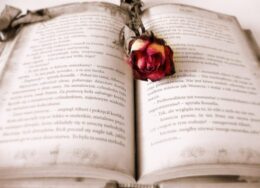Hiya guys,
As the Watchers asked us to mention the genres of our stories, I thought, why not write a post to make it easier. I’m sure most of you might have sent your updated list already, but those who didn’t, take a look at this post. And, learning never goes out of fashion.
I’ve tried my best to include all of the genres with sub-genres. If I missed any, let me know in the comments, and we’ll update the post.
Before we move on, remember, there is no rule that a story should belong to only one genre. Stories can and will belong to more than one genre.
Anthology– A collection of stories by different authors on the same theme. An anthology can have works belonging to different genres or same genre.
Ex: Once Upon series by Nora Roberts
Classic– Works belonging to a period written by famous authors. These are considered important, influential, most loved and read by the readers.
Ex: 1984 George Orwell
Comic & Graphic- Hand-drawn picture book with limited words in the speech bubbles. Read by kids and adults.
Ex: Batman by Tom King
Children’s Literature– Written for kids aged up to 11 years. Can include works suitable for kids up to 13 years.
Ex: Alice’s Adventure in Wonderland by Lewis Carroll
Action & Adventure- Something out of the ordinary happens with the protagonist. Is fast-paced, includes danger, physical action.
Ex: The Three Musketeers by Alexandre Dumas
Drama- Meant for theatre. Has high emotions and gestures.
Divided into comedy, tragedy, tragicomedy, and melodrama.
Ex: Shakespeare plays.
Crime & Detective- Includes crime, murder, solving the crime as the main plot.
Classified into,
Cozy mysteries– homely, less violence, not gruesome.
Ex- Agatha Christie works.
Whodunit- Old fashioned crime and solution finding plot with clues scattered in the story.
Ex- Agatha Christie works.
Noir/ Hardboiled/ Dark crime– Includes gruesome characters and scenes, has a darker setting, a detective with gray shades.
Ex: The Black Dahlia by James Ellroy
Fable- Features animals and birds, mythical creatures, etc. as main characters. Stories with moral values.
Ex: Panchatantra
Parable- Similar to fable, except the characters are humans. Teach principles of life.
Ex: Christmas Carol by Charles Dickens, The Little Prince by Antoine de Saint-Exupéry.
Folklore- Ancient stories passed from one generation to another orally. Contains stories including mythology, mythical creatures, etc.
Ex: Aesop’s Fables
Fairytale- Written for children and adults, includes magical content and has happy endings.
Ex: Grimm’s Brothers Collection
Fan-fiction- Works with setting and characters belonging to another (popular) book and has a new story and treatment.
Ex: Harry Potter and the Methods of Rationality by Eliezer Yudkowsky
Historical Fiction- Set in a particular period (at least 50 or more years ago). The plot, characterization, and dialogues should adhere to the conditions and details of the period.
Can be combined with various other genres to get Historical Fantasy, Historical Romance, etc.
Historical is divided into various subcategories based on the period and region. Medieval, Regency, Victorian, Elizabethan, New England, African, Caribbean, Australian history, etc.
Ex: Pride and Prejudice by Jane Austen, War and Peace by Leo Tolstoy
Fantasy- Set in a new and the fictitious magical world and uses magic as a major theme. Can include new or existing mythical creatures.
Categorized into Historical Fantasy, Urban Fantasy, Dystopian Fantasy, YA Urban Fantasy, High Fantasy, Low Fantasy.
Ex: The Hobbit by JRR Tolkien
Humor– Funny and lighthearted stories that make the readers laugh. Entertaining and exciting to read.
Ex: Animal Farm by George Orwell, Sh*t My Dad Says by Justin Halpern
Legend- Kind of folklore with a strong protagonist. Deals with the life of the hero character.
Ex: Iliad by Homer.
Horror- Aimed to create fear, terror, or repulsion in readers. Categorized into-
Gothic- set in the Gothic Era, includes haunted houses or villages with no modern amenities. (Jane Eyre by Charlotte Bronte)
Lovecraft- Made famous by the author. Has no scary or gruesome characters but manages to terrify the readers by creating an atmosphere of intense terror. (Revival by Stephen King)
Splatterpunk/ Gore– Includes dark horror plots with ugly and revolting creatures. Has lots of graphic details about horrific violence. (Infernal Angel by Edward Lee)
Ex: Dracula Bram Stoker
Magic Realism- Stories where magic plays a natural role in a realistic environment. Magic and real-life are intermixed, and nothing appears out of ordinary.
Ex: Metamorphosis by Frans Kafka, Midnight’s Children by Salman Rushdie, Kafka on the Shore by Haruku Murakami.
Mythology- Uses traditional narrative and set in ancient times. Has Gods and demi-gods as characters and preach human values.
Ex: Odyssey by Homer
Mystery- Includes crime, suspense; a story with a problem, clues, and solution.
Can be classified similar to crime fiction.
Ex: Gone Girl by Gillian Flynn
Realistic Fiction- Uses realistic settings and characters to create stories that appear real but are not real. Usually, set in modern times.
Ex: The Fault in Our Stars by John Green
Romance– Stories with love and relationships; emotional and happy ever after endings. Categorized into the following.
Clean romance, historical romance, paranormal romance, contemporary romance, multicultural romance.
Ex: Happy Ever After by Nora Roberts, Emma by Jane Austen, It Ends With Us by Collen Hoover, The Duke and I by Julia Quinn
Paranormal- Includes characters with extra sensory abilities (telepathy, mind reading, telekinesis, etc.) and mythical creatures like vampires, werewolves, zombies, etc.
Ex: Vampire Academy by Richelle Mead, Twilight Series by Stephanie Meyer
Chick lit- Written for young women. Heroine centric stories. Deals with the life of the protagonists. Can include romance.
Ex: The Undomestic Goddess by Sophie Kinsella
Coming of age- Stories that portray the growth of the protagonist. Usually of a young adult to adult. Can be used in YA fantasy, paranormal, and Sci-fi genres.
Ex: Great Expectations by Charles Dickens, Lord of the Flies by William Golding
Sci-fi- Stories based on science and technology and set in the future. Includes aliens, time travel, life on other planets, parallel universe, etc.
Ex: The Time Machine by HG Wells
Satire- Making fun of vices, prejudices, and foolishness using humor, sarcasm, and irony.
Ex: Animal Farm by George Orwell, Gulliver’s Travels by Jonathan Swift
Speculative Fiction- Uses imaginative themes, supernatural or futuristic settings. Cyberpunk is a category of this genre and deals with advanced cybercrimes.
Ex: Twenty Thousand Leagues Under the Sea by Jules Verne, The Handmaid’s Tale by Margret Atwood.
Short Story- With limited word count (8k) and minimum or no subplots. A long short story has around 10k-12k words.
Ex: Collection of Short Stories by O Henry
Suspense- Focused on creating a mood of tension, excitement, and thrill for the readers. This genre is used in combination with Thrillers and Mysteries, romance, paranormal, historical genres.
Ex: In the Woods by Tana French, In Death series by JD Robb
Thrillers- Stories that are fast-paced and include crime, mystery, murder, and suspense.
Categorized into Medical thrillers, Legal thrillers, Political thrillers, Psychological thrillers, Technothrillers.
Ex: The Woman in the Window by AJ Finn (Dan Mallory), The Girl on the Train by Paula Hawkins
Erotica– Stories with explicit sexual content. Is categorized based on heat levels. Can have stories with LGBT+ characters as protagonists.
Ex: 50 Shades by EL James
YA Fiction- Aimed at the young adult high school and college students. Deals with the internal conflict between stuck between children and adults. Has less of romance (nothing explicit) and is set in an urban/ dystopian world. Categorized into YA Fantasy, YA paranormal, YA mystery, etc.
Ex: The Book Thief by Markus Zusak, The Perks of Being a Wallflower by Stephen Chbosky.
Adult Fiction- Written for new adults and can belong to why genre. Has medium to explicit content.
Ex: The Help by Kathryn Stockett, The Time Traveler’s Wife by Audrey Niffenegger
LGBTQ+ Fiction– Stories with protagonists belonging to the LGBT+ community. Deals with their lives, emotions, and struggles. It has subcategories based on each classification.
Ex: If I Was Your Girl by Meridith Russo, Oranges Are Not the Only Fruit by Jeanette Winterson
Dystopian– Stories set in and dealing with the dark aspects of society.
Ex: The Handmaid’s Tale by Margret Atwood, The Maze Runner Trilogy by James Dashner
Let’s now move on to Non-fiction. I’ve listed out the categories and provided explanations only for the ones that tend to be confusing.
Non-fiction is a narrative that deals with truth in varying proportions. I can be written in passive or active voice, the first, second or third person narrative.
Biography- Someone else writing another person’s life story as a book. Can be written when the person/ protagonist is alive or dead.
Ex: Steve Jobs by Walter Issacson
Autobiography- The writer writes their life’s story. Mostly written in the first-person narrative.
Ex: The Autobiography Of Benjamin Franklin
Memoir– A collection of memories of a person’s life listed to create a book. It provides a limited view of the person’s life as only selected memories are shared with the readers.
Ex: Dreams From My Father by Barack Obama
Narrative Non-fiction– Creating a factually accurate narrative and presenting them as a story. Also called literature non-fiction or Creative non-fiction.
Ex: The Orchid Thief by Susan Orlean
Other categories are,
Travel
Cookbook
Religious books
Textbooks
Diary
Health-related books
Journals
Essay
Self-help books
Speeches
Reference books
Periodicals
That’s it for now, guys. List your favorite books in each genre in the comments below.
See ya, Artoons.
***
Photo By: DGlodowska









